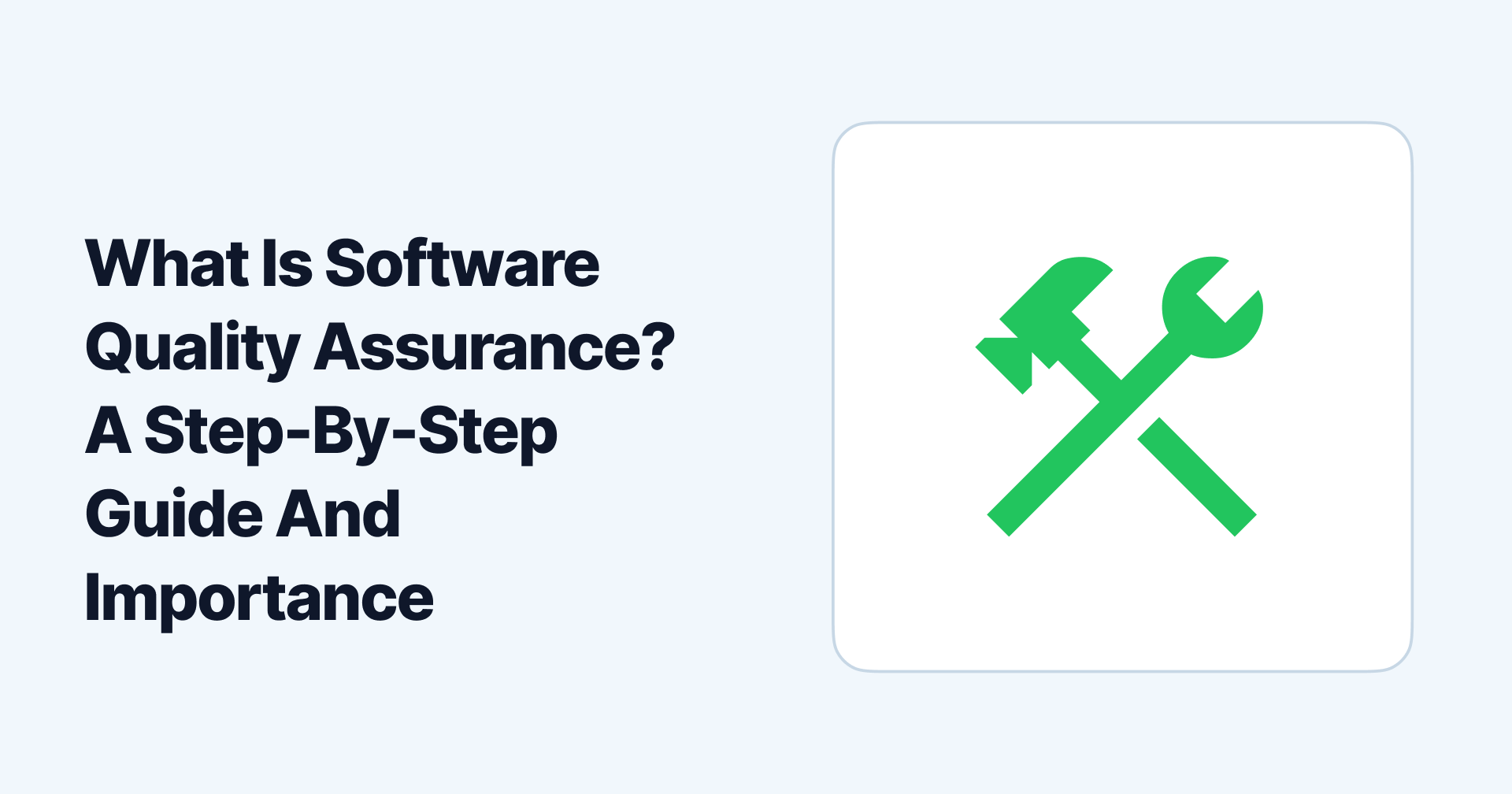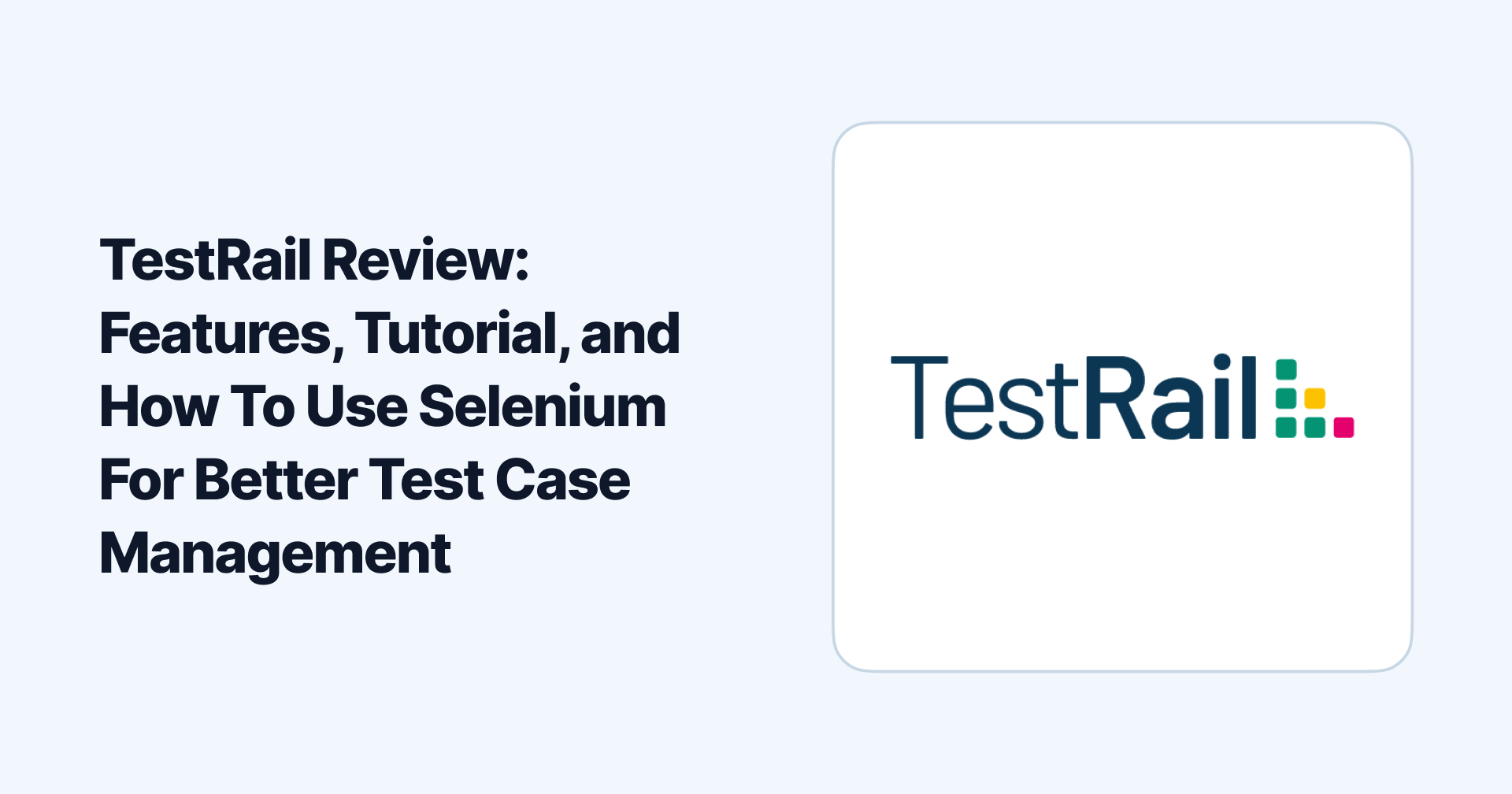The demand for software products is increasing, and we live in a fiercely competitive world. To deliver quality that meets a user's expectations is our responsibility. People nowadays want options that work seamlessly and efficiently, and there's no room for slow UI or buggy software.
This is where software quality assurance comes into play. But what is software quality assurance? And why is it necessary? Software QA is a cornerstone within the development pipeline, potentially changing how we build and deploy software applications.
We have compiled this guide that explains software QA and its significance in detail, providing a step-by-step guide on conducting it effortlessly. Let's begin!
What is Software Quality Assurance?
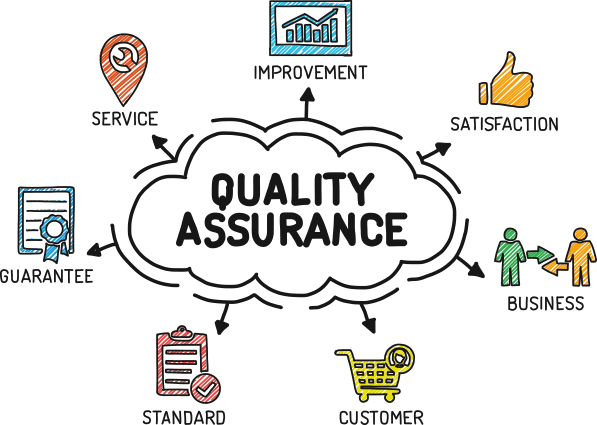
Starting this "What is software quality assurance?" guide, let us first explain SQA and its different components.
Software quality assurance (SQA) can be defined as a way of assuring software quality through various methods like testing at different stages and reviewing it before the final release.
This helps ensure the final software is free of bugs and glitches, providing a seamless user experience.
Quality assurance is usually done parallel to software development so critical issues can be identified and fixed before they become a headache for the development team and customers. Here are some key characteristics of a software quality assurance process:
A pre-defined approach to quality management
Regular technical reviews
Implementing a multi-testing strategy
An effective software engineering technology
Measurement and reporting
The components define the different steps involved in a quality assurance process. These steps provide a detailed guide on effectively conducting the SQA process to minimize potential errors and defects.
Steps Involved in the SQA Process
Taking this "What is software quality assurance?" guide further, we'll now discuss several steps involved in a software's quality assurance process.
Any product that reaches the market with the intention of customer satisfaction goes through different parameter tests, and so does software.
The parameters, aka quality standards, are defined beforehand, and the software is then assessed according to that plan to ensure it abides by the standards defined. These steps are:
Step 1: Planning

The quality assurance process begins with strategic planning. Plan everything to avoid any last-minute issues for effective quality assurance:
Identify Requirements
Identify your customer's or target audience's requirements/expectations from your software. The better you understand that, the better you will be able to cater to their needs.
Your quality standards will also be according to their needs, not yours. A good understanding lays the foundation for the entire SQA process.
Establish Quality Standards
Once you know what they need, you can establish quality standards accordingly. While there are some required QA standards like ISO 9001, your team can set software-specific quality standards individually once they know what kind of software they're building.
Develop SQA Plan
Now you can create your software quality assurance (SQA) plan. SQA plan defines the QA process in detail, containing the procedures, tools, and techniques employed to ensure a product aligns with your defined standards or the Software Requirements Specification (SRS). An SQA plan lists the areas to be reviewed and audited. It usually consists of the following:
Purpose
Reference
Software configuration management
Problem reporting and corrective action
Tools and methodologies
Code control
Records for collection, maintenance, and retention
Testing methodology
Once the SQA plan is defined, you can implement your quality control procedures.
Step 2: Implementation

Implement your quality control plan to ensure your software meets the established quality control standards. You must aim to:
Adopt a Multi-testing Strategy
A multi-testing strategy combines testing the software from various angles to ensure that no part of it is left unchecked. Different tests like unit, regression, and performance testing are performed to identify defects and ensure the best software quality.
Enforce Process Adherence
Process adherence confirms whether the team members follow all the set processes and standards. This typically includes:
Process Evaluation is where the QA team ensures that the set standards are followed correctly. Processes are evaluated occasionally to see if any adjustments are to be made.
Process monitoring collects related metrics at designated times to understand if the process matures as expected.
Additionally, a formal technical review or FTR is conducted to evaluate the quality and design of the prototype first. This helps detect errors in the SDLC early and modify the process if needed.
Control Change
Any changes made to the code, features, design, etc., are monitored using manual and automated tools to understand their impact on the software's overall behavior.
Sometimes (during updates), changes are deployed through staged rollouts to minimize disruption. The goal is to ensure the quality of the software is maintained even during changes.
Once the strategies are successfully implemented, the next step is to assess the quality of the software.
Step 3: Assessment

Now it's time to assess your software to ensure it adheres to the quality standards set by your team. Careful and in-depth assessment helps prevent future mishaps and facilitates easy maintenance.
Conduct Testing
The first assessment phase is to conduct testing. You must rigorously test the software only using manual and automated testing methods during development.
Multiple tests are performed repetitively to identify errors so there are no surprises post-deployment. Code tests usually start at unit testing and end at regression testing.
At this point, you must perform a stress test on the software to ensure it can withstand the test of time.
Perform Audits
Audits are conducted to compare the actual development process with the established guidelines. Any deviations or compliance issues must be addressed quickly.
The audit team should document the issues for future reference and suggest any changes that must be made to ensure the best software quality.
Measure Change Impact
If the audits have suggested any changes, and they are made, your QA team's next step is to measure that change's impact on the software.
For this, software quality metrics allow the developers to observe the activities after the proposed changes until the end of SDLC and initiate corrective action as required.
When you're satisfied with your assessment, it's time to identify, rectify, and document the errors so:
They don't happen again.
If they do, you plan to fix them as soon as possible to minimize damage.
Step 4: Improvement and Documentation

This is the last stage of any quality assurance process as it helps improve the quality and prepare it for release. Your QA team should monitor improvements and document the SQA processes for future reference.
PDCA Cycle
A Plan-Do-Check-Act (PDCA) cycle is a continuous improvement approach. It consists of four major steps:
Plan- Planning involves identifying errors, setting goals, and allocating resources for improvement within a set timeframe. You also must pre-define how the success of the software will be measured.
Do- As the name suggests, this part of the PDCA cycle involves making improvements to the software according to the goals set during planning.
Check- Once the changes are made, it's time to check that the changes comply with the goals set and do not affect the other (stable) parts of the software.
Act- The last step involves making any necessary changes, if required, regarding the issues that arise during the check.
A PDCA cycle is continuous and continues until the final software is error-free and compliant with the guidelines and goals defined in the early stages of production.
Managing Good Relations
The QA team is also responsible for maintaining good relations with the developers during the quality assurance process and minimizing conflicts as everyone works towards a common goal.
Maintaining Reports
Your team needs to properly document the entire process, step-by-step, to be reviewed by the stakeholders. Testers can also use this documentation as a reference point for future quality assurance projects.
Now you know how to conduct an in-depth software quality assurance check. But is it necessary? Absolutely. Keep reading to know why.
Why is Software Quality Assurance Necessary?
Moving ahead with the "What is software quality assurance?" guide, allow us to explain why it is necessary for your organization.
Software quality assurance contributes to the overall satisfaction of the developers, testers, and customers. Here's how it benefits an organization:
Cost Reduction

You can significantly reduce costs incurred during development with an effective quality assurance process. It helps identify and prevent bugs early by reviewing code and testing the software multiple times, reducing the need for extensive work.
Catching these bugs early minimizes the need to fix these issues later on in the SDLC when they may become critical to the health of the software, saving time and resources.
Improved Quality

A quality assurance process ensures that the software goes through rigorous testing by employing different types of tests like unit testing, functional testing, performance testing, and more.
This ensures that the code is consistent, error-free, and caters to a user's requirements, resulting in better software quality in a shorter period.
Smoother Development Process

When developers and QA testers work together to improve a product's quality and functionality, it builds healthy competition and team culture. When working together, it's easier to identify and fix defects as soon as possible.
This helps reduce the workload on the entire team and prevents any problems from escalating that can cause malfunctions following the product's release. This improves the development process and makes it effortless.
Easy Maintenance and Sustainability

SQA heavily emphasizes documentation, ensuring that the test results and reports are well documented, which aids in understanding the base code and makes maintenance easier.
Good-quality software is easier to update without getting disrupted, and even if it does, it's easier to fix than low-quality software.
Builds Trust and Reputation

Releasing new software in this tech-savvy market is already overwhelming. You do not want to make lofty promises and then release buggy software that does nothing more than disappoint the users.
Think about what it will do to your brand image and reputation. A good quality check will help prevent this by testing your product thoroughly before it goes out.
By running a quality assurance test, you also prove that your product complies with data privacy laws, gaining the user's trust.
This "What is software quality assurance" guide taught us that thorough software testing is integral to quality assurance. Managing these test cases and their results and reporting them can quickly become challenging without the right tools.
Allure Testops is a one-of-its-kind quality assurance tool that helps manage and document your test cases and integrates with all your favorite testing frameworks. Let's explore it in detail:
Allure Testops: The Best QA Tool
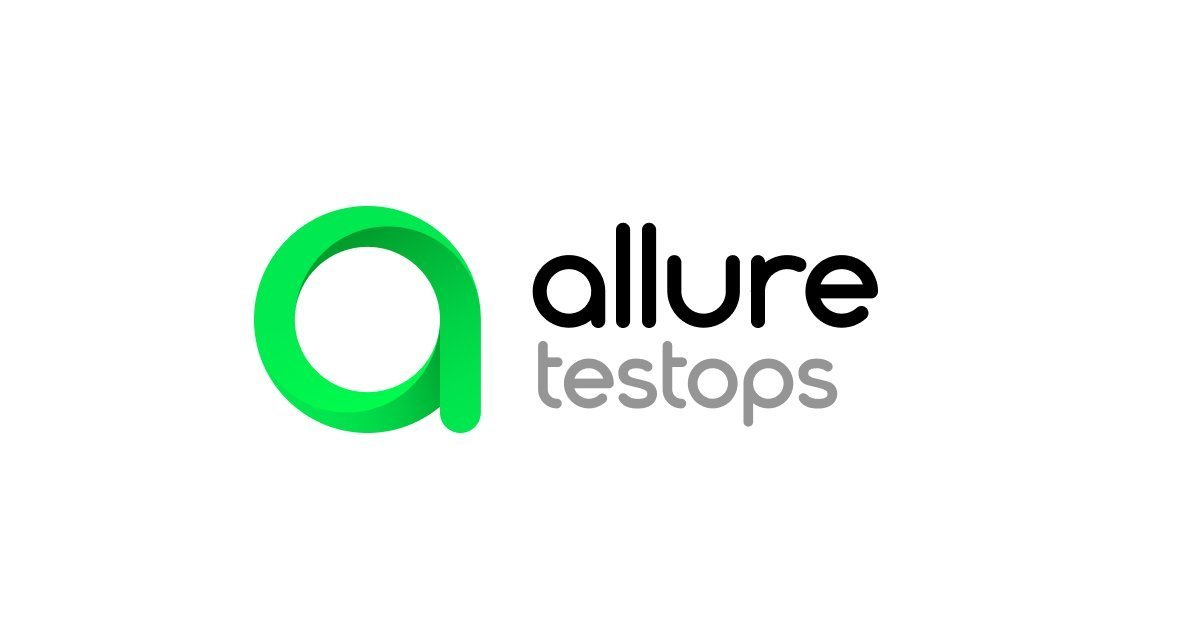
Allure Testops is an end-to-end test automation and management platform designed to simplify and keep control of your manual and automation testing. It offers a comprehensive, user-friendly interface that simplifies test management throughout the SDLC.
It simplifies test execution by providing real-time progress and valuable insights into software quality. Allure Testops also provides native integrations with various testing frameworks and CI systems, supporting multiple programming languages.
Allure helps you organize, track, and manage test cases in real time to ensure transparency and efficiency in your CI/CD pipeline. It also allows you to securely access your data using the rich REST API and Allure Query Language. Let's learn more about its features:
Features
In addition to enterprise-level security and role-based access control, Allure Testops provides multiple features that make it the best tool for quality assurance. They are:
Smart Test Cases
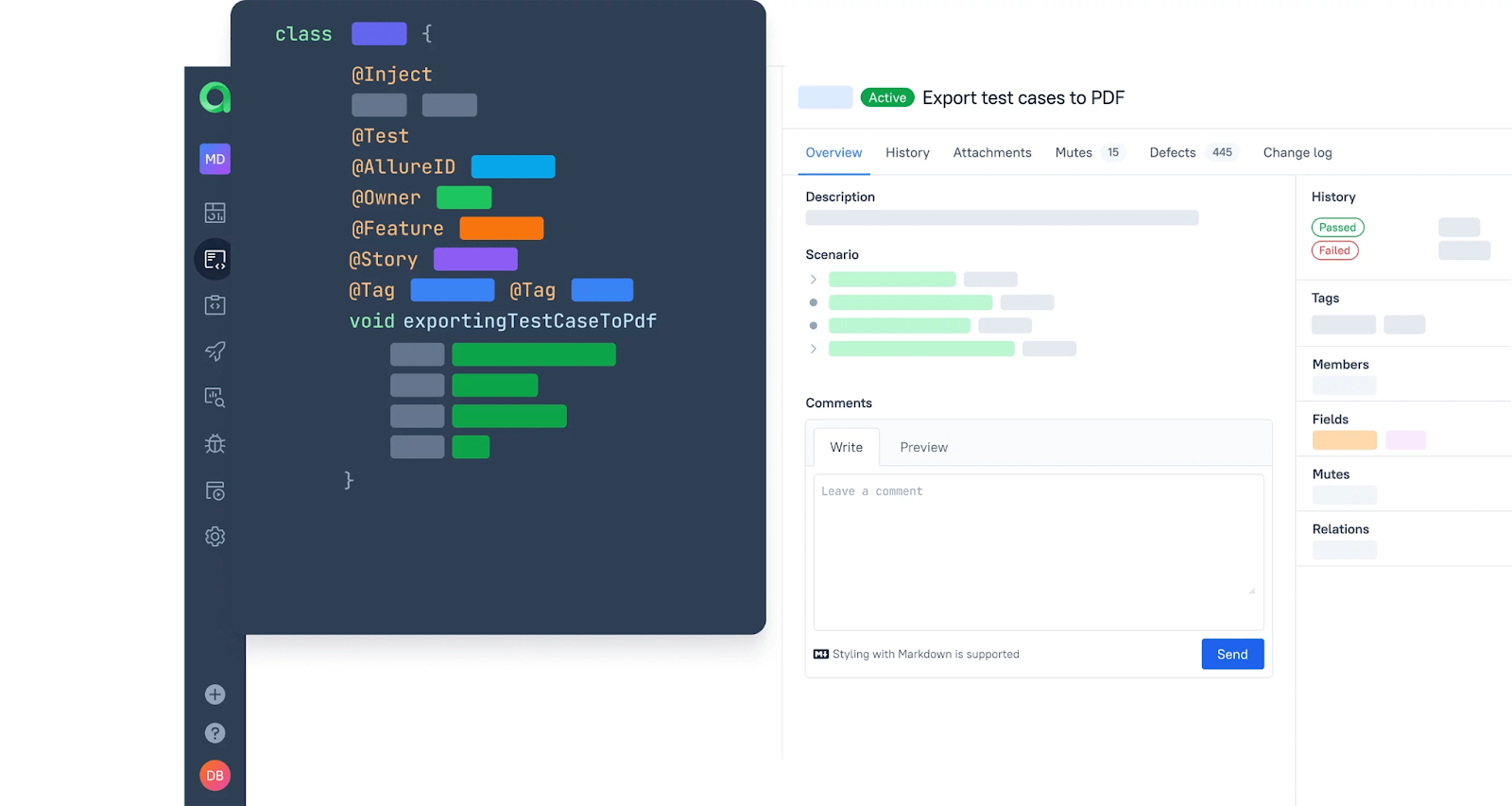
You no longer have to manually update your test cases after each test run with Smart Test Cases. Allure Testops automatically generates test cases from code and updates them.
An advanced code analysis system helps analyze what has been added or changed and updates the test cases based on the results received at the time of closing the launch.
Two-way integration
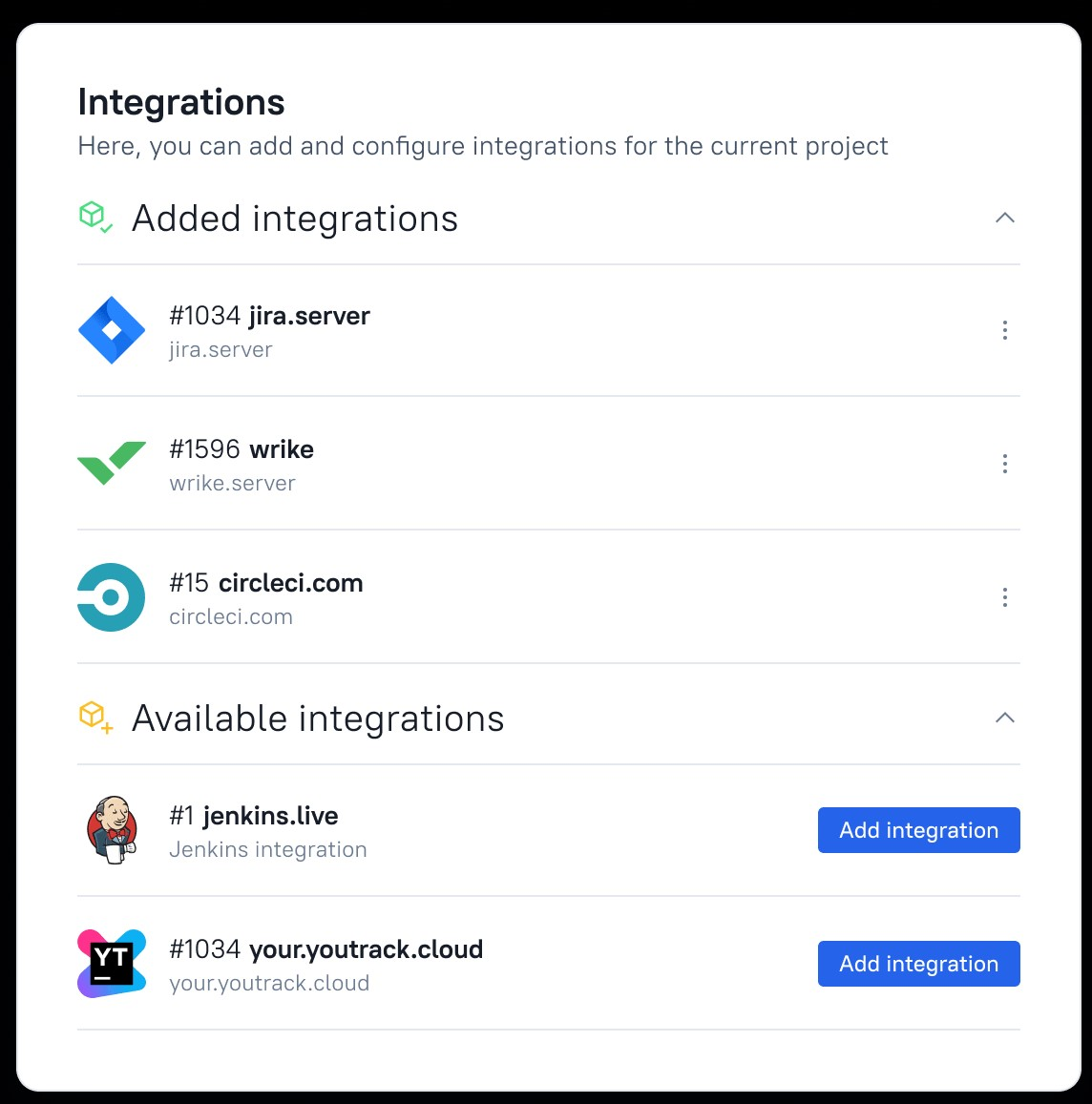
Allure TestOps integrates seamlessly with tools like Jenkins, Bamboo, GitLab, and GitHub. These integrations allow you to run automated tests on demand directly from Allure Testops to any CI tool and get detailed test results in real time!
A centralized hub
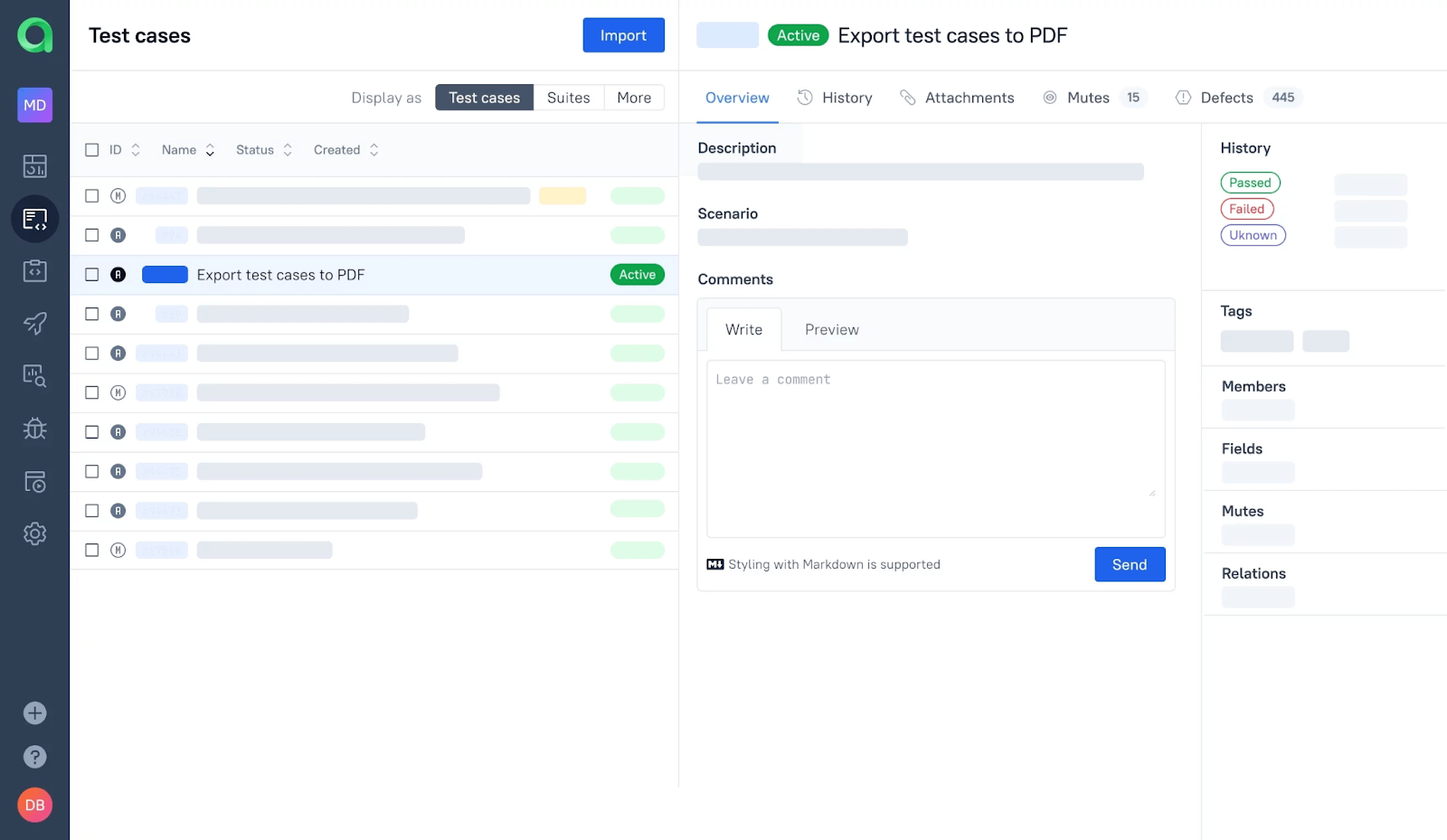
Allure Testops lets you easily manage all your testing processes in a centralized hub by linking manual and automated testing to increase the team's productivity.
It helps speed up your CI/CD pipeline and gives instant insights into your test coverage. Allure can handle the execution of 1,000 or 1,000,000 test cases smoothly.
Metrics and KPIs

Allure Testops analytics helps you review your product's status, create targets, and follow QA processes. You can create custom metrics and Key Performance Indicators (KPIs) using Allure Query Language to monitor and track project progress at a glance.
Allure Report is a multi-language, flexible reporting tool designed by the Qameta team that generates visually appealing and comprehensive test reports.
It generates detailed reports with test case attachments for passed, failed, or skipped results, which are easy to understand and document for your team. Reports aggregate multiple test runs into a single report, covering every component you need for a release.
Pricing
Allure Testops offers two plans- Cloud and Server. Pick your plan and try it yourself without committing to anything; you don't need a credit card to sign up for the free trial.
| Cloud | Server |
|---|---|
| Hosted on Allure's infrastructure | Hosted in-house |
| $39/ month per user or fewer | $30/ month per user or fewer |
| Secure AWS hosting | Full control over your instance |
| 60 GB storage included | Private services integration |
| Monthly or annual billing | Quarterly or annual billing |
| From 1 user | From 5 users |
| Get 14-day free trial | Get 30-day free trial |
Conclusion
We hope we did justice to your "What is software quality assurance" question with this guide. Quality assurance is more of a necessity than a choice these days, where new products are released occasionally.
Nothing puts off a user more than software that doesn't meet their expectations. We've provided a step-by-step guide on how to conduct a QA check and why you must.
Testing the software at different stages during the development will reduce workload and cost and benefit your organization considerably later. To conduct a QA check seamlessly, try putting Allure Testops to the test.
It effortlessly automates, manages and documents all your test cases and provides audit logs and enterprise-level security. Allure already integrates with your existing CI tools and provides real-time updates into the testing process.
Allure Testops will help your QA teams deliver quality software more efficiently while keeping pace with this ever-evolving digital landscape.
